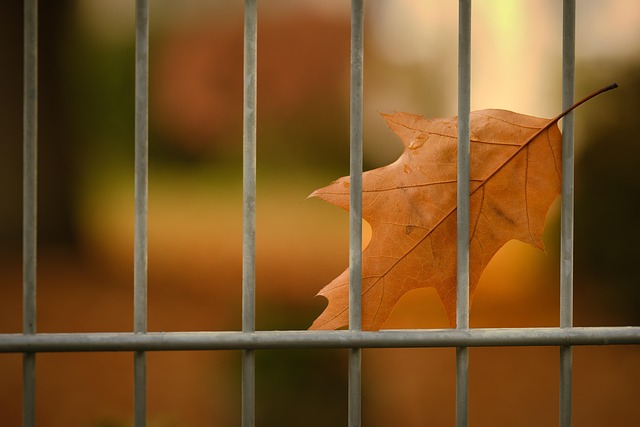In coastal regions, where harsh weather conditions and salty air pose unique challenges, durable wooden fencing is an attractive and sustainable solution. This article delves into the intricacies of designing and installing robust wooden fences capable of withstanding the rigors of the coastline. We explore the benefits of natural wood in these environments, guide readers through crucial material considerations, installation best practices, and maintenance tips to ensure longevity. Additionally, real-world case studies will highlight successful implementations, offering valuable insights for both residential and commercial projects.
- Understanding Coastal Fencing Challenges
- Advantages of Durable Wooden Fencing
- Material Selection for Coastal Environments
- Installation Techniques for Longevity
- Maintenance Strategies for Coastal Fences
- Case Studies: Successful Wooden Fencing Implementation in Coastlines
Understanding Coastal Fencing Challenges
Coastal areas present unique challenges when it comes to fencing due to their harsh environments. Salty air, frequent moisture, and strong winds can take a toll on traditional fencing materials, leading to frequent replacements and increased maintenance costs. The ideal coastal fence not only withstands these elements but also blends seamlessly into the surrounding landscape.
Durability is key when selecting materials for coastal fencing. Wooden options specifically need to be treated to resist rot and insect damage, which are common issues in humid environments. Treated, high-density wood or composite materials offer better resistance and longer lifespans compared to untreated woods, making them ideal choices for these challenging locations.
Advantages of Durable Wooden Fencing
Durable wooden fencing offers an array of advantages for coastal areas, where traditional materials might struggle to withstand the harsh environment. Firstly, wood is a naturally sustainable resource, making it an eco-friendly choice. It can be sourced locally, reducing transportation emissions and supporting regional economies. Secondly, compared to other materials like metal or vinyl, wood provides better insulation, helping to regulate indoor temperatures and potentially saving on energy costs.
Moreover, the aesthetic appeal of wooden fencing cannot be overlooked. Its natural beauty and warm tones can enhance the overall look of a property, especially when treated with weather-resistant finishes. Lastly, wooden fences are relatively easy to install and maintain, making them a cost-effective solution. Regular cleaning and minimal repairs can ensure they last for many years, providing both functional and aesthetic benefits to coastal homes.
Material Selection for Coastal Environments
When choosing materials for coastal fencing, durability is paramount due to the constant exposure to salt air, extreme weather conditions, and moisture. Traditional wooden fences may not hold up well in such environments, leading to frequent repairs or replacements. For a robust and long-lasting solution, selecting the right wood species is crucial.
Hardwoods like cedar, redwood, or treated timber are excellent choices for coastal areas. These woods naturally resist rot and insect damage, thanks to their dense structure and natural oils. Additionally, they have a higher resistance to salt water corrosion, ensuring your fence remains sturdy against the harsh coastal climate.
Installation Techniques for Longevity
The installation technique plays a pivotal role in ensuring the longevity and durability of wooden fencing in coastal areas, where it faces constant exposure to salt air, strong winds, and potential damage from storms. A robust installation begins with proper site preparation. The ground should be levelled, and any existing vegetation removed to ensure good contact between the fence posts and the soil. This foundational step is crucial as it provides stability and prevents post-settling issues that could compromise structural integrity.
When setting the posts, use concrete to create a solid foundation. This involves digging holes of the appropriate depth, placing the posts, and then pouring concrete around them. The concrete should be left to cure thoroughly before attaching the fence panels or rails. Additionally, regular maintenance is essential. Inspecting and repairing any damaged sections promptly will extend the life of the fencing, keeping it strong and secure against coastal elements.
Maintenance Strategies for Coastal Fences
Maintaining wooden fences in coastal areas requires a different approach due to the constant exposure to salt water and harsh weather conditions. Regular cleaning is essential to remove any salt buildup, which can accelerate wood decay. This involves using a pressure washer or brush to thoroughly clean the fence at least twice a year. Additionally, applying a fresh coat of waterproof sealant every couple of years will protect the wood from moisture intrusion.
Another crucial strategy is to ensure proper drainage around the fence. Coastal areas often experience high humidity and heavy rainfall, so installing proper drainage systems like downspouts or slope grading can prevent water pooling near the fence. Regular inspection for any signs of damage, such as splintering, warping, or rot, is also vital. Promptly addressing these issues with repairs or replacement will extend the life of the wooden fencing.
Case Studies: Successful Wooden Fencing Implementation in Coastlines
In various coastal communities around the globe, wooden fencing has proven to be a durable and aesthetically pleasing solution for property boundaries. Case studies from these areas highlight successful implementations that have withstood harsh weather conditions, including strong winds and salty sea air. One notable example is the use of treated cedar wood in a seaside town known for its rocky coastline. The local government initiated a project to replace outdated fencing with a more sustainable option, selecting cedar posts and rails securely fastened to concrete foundations. After several years, the fences show minimal deterioration, proving their longevity against coastal elements.
Another successful case involves a residential community where wooden privacy fences were installed along the beachfront. Property owners collaborated to create a unified aesthetic using custom-cut cedar panels with intricate designs. This collective effort not only enhanced the beauty of the coastline but also provided much-needed privacy for residents. Regular maintenance, including re-staining and repair work, has ensured the fences’ integrity, demonstrating that with proper care, wooden fencing can thrive in challenging coastal environments.
